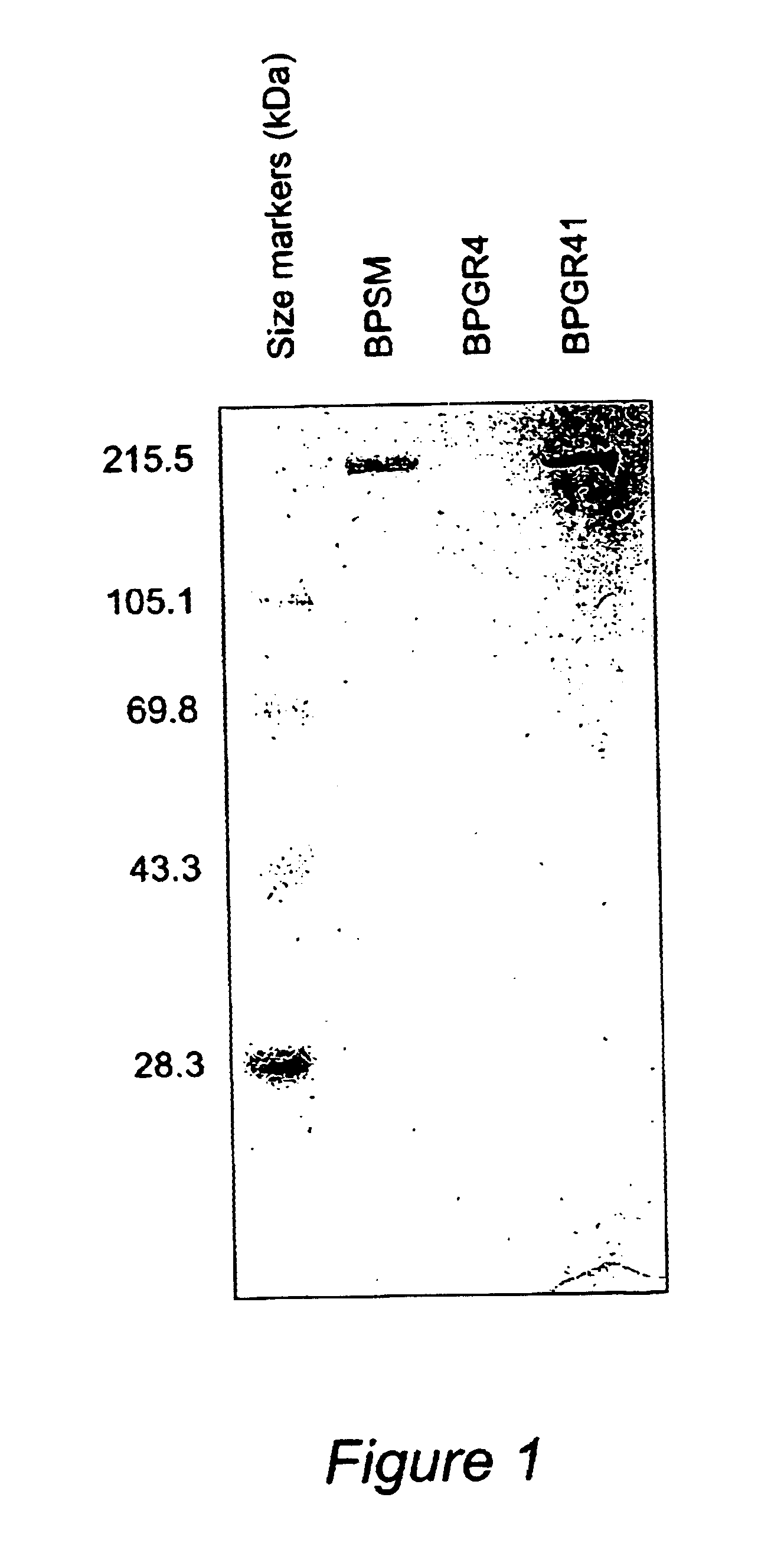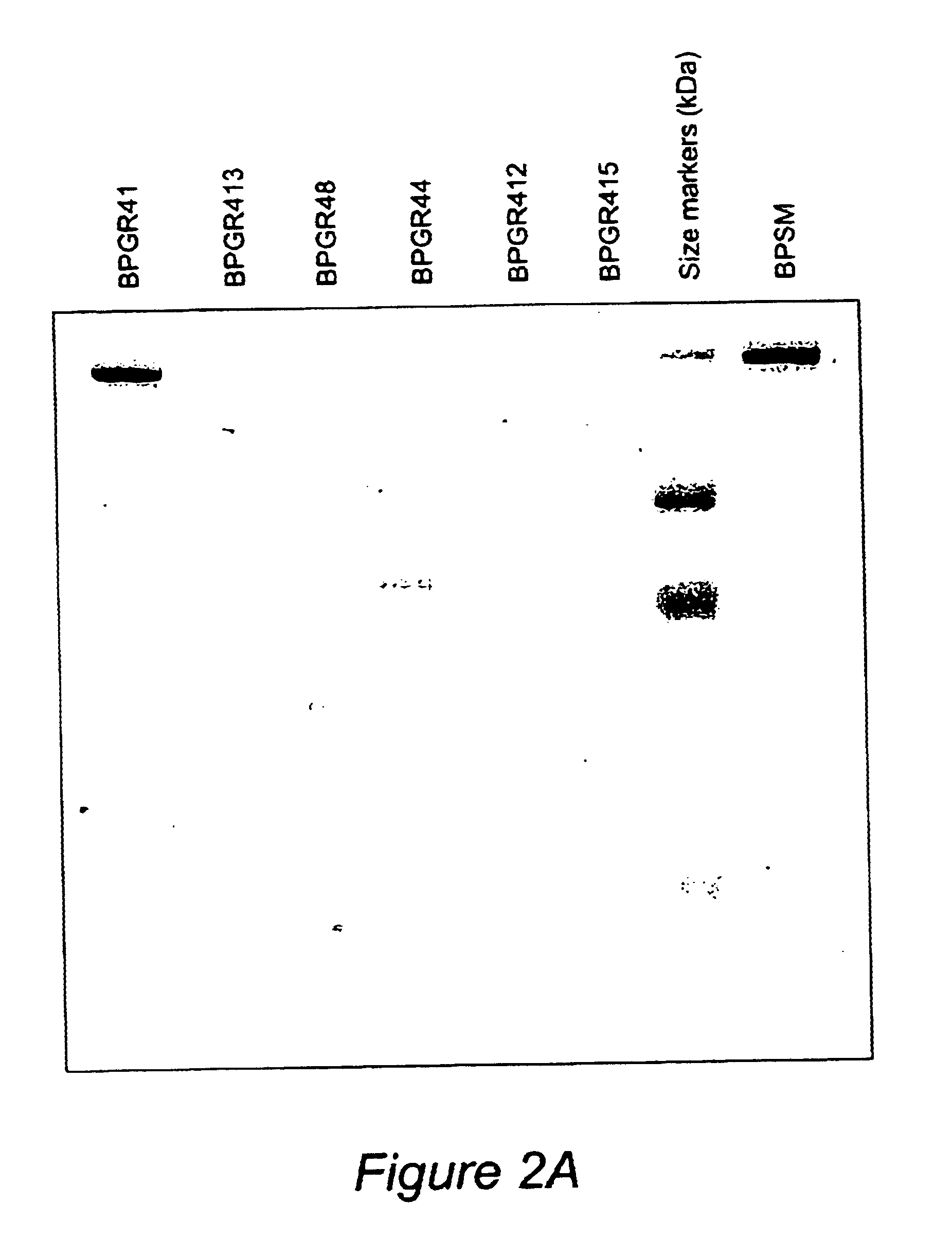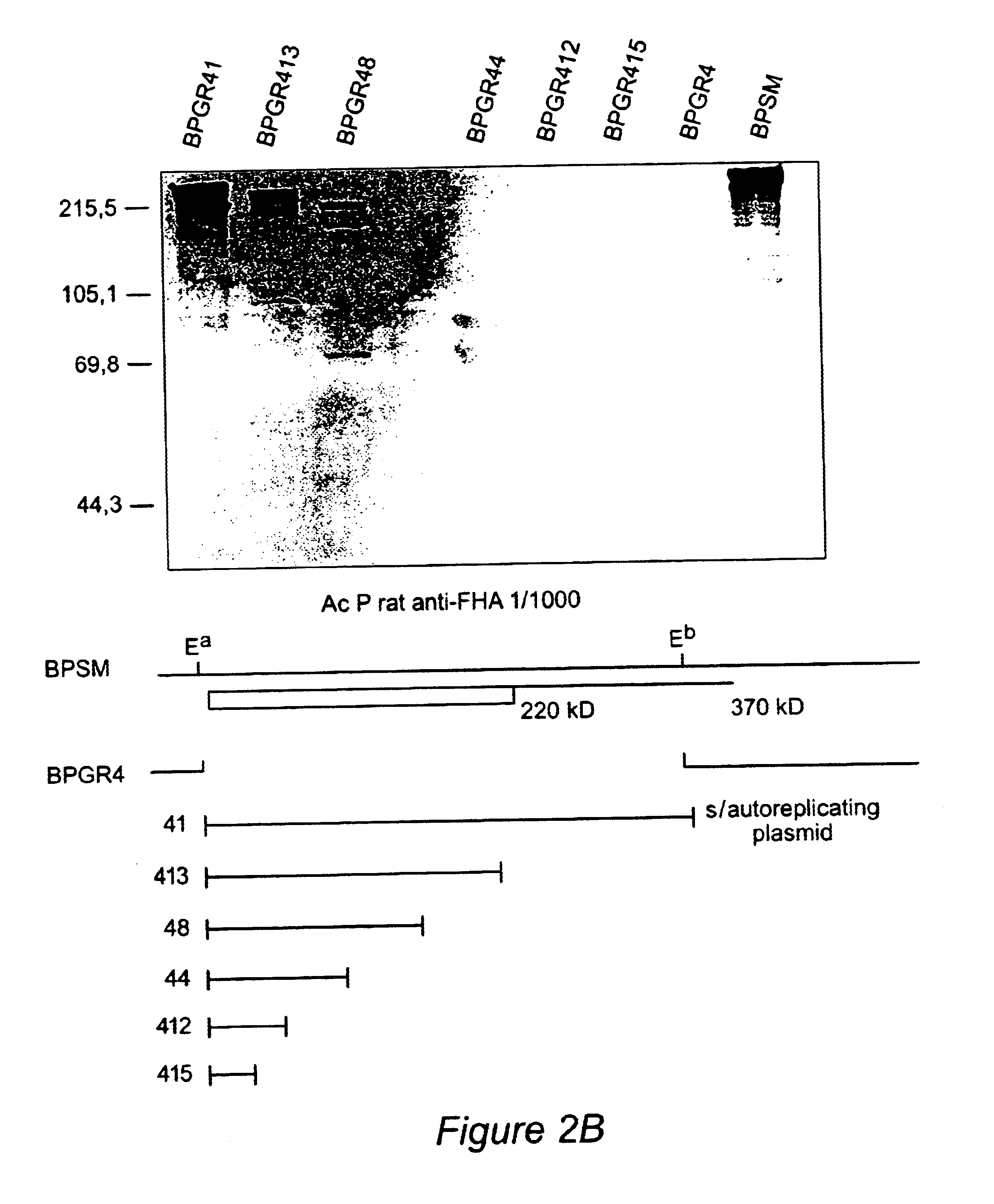Recombinant proteins of filamentous haemagglutinin of bordetella, particularly bordetella pertussis, method for producing same, and uses thereof for producing foreign proteins of vaccinating active principles
a technology of filamentous haemagglutinin and bordetella, which is applied in the field of recombinant proteins of filamentous haemagglutinin of bordetella, and can solve the problems of slowing down the industrial use of recombinant proteins, difficulty in purification, and harmful to recombinant proteins
- Summary
- Abstract
- Description
- Claims
- Application Information
AI Technical Summary
Benefits of technology
Problems solved by technology
Method used
Image
Examples
Embodiment Construction
[0061]I. Complementation of the B. pertussis strain BPGR4 by a Plasmid Derived from pBBR1 Containing the fhaB Gene.
[0062]In order to discover whether it is possible to complement a chromosomal mutation of the fhaB gene by an autoreplicating plasmid we used the B. pertussis strain BPGR4 (Locht et al., 1992), a strain derived from the B. pertussis wild-type strain Tohama I in which the EcoRI fragment of 10 kb containing most of the reading frame of the fhaB gene and its promoter has been deleted from the chromosome by two successive homologous recombination events. This strain does not produce FHA. Moreover, the 10 kb EcoRI fragment isolated from pRIT13202 (Delisse-Gathoye et al., 1990) and containing most of the fhaB gene was cloned into the EcoRI site of the plasmid pBBR122. This plasmid is a derivative of pBBR1 isolated from Bordetella bronchiseptica and described by Antoine and Locht (Antoine, R and Locht, C (1992) Mol. Microbiol. 6, 1785-1799). It contains a 1364 bp Hhal fragment...
PUM
| Property | Measurement | Unit |
|---|---|---|
| concentration | aaaaa | aaaaa |
| time | aaaaa | aaaaa |
| time | aaaaa | aaaaa |
Abstract
Description
Claims
Application Information
 Login to View More
Login to View More - R&D
- Intellectual Property
- Life Sciences
- Materials
- Tech Scout
- Unparalleled Data Quality
- Higher Quality Content
- 60% Fewer Hallucinations
Browse by: Latest US Patents, China's latest patents, Technical Efficacy Thesaurus, Application Domain, Technology Topic, Popular Technical Reports.
© 2025 PatSnap. All rights reserved.Legal|Privacy policy|Modern Slavery Act Transparency Statement|Sitemap|About US| Contact US: help@patsnap.com



